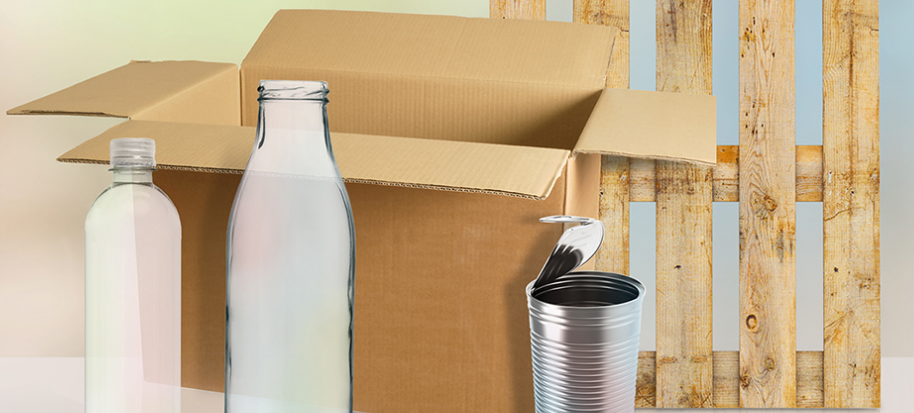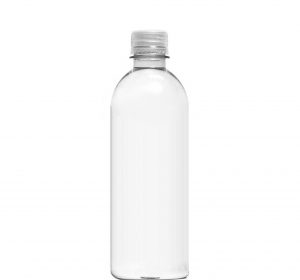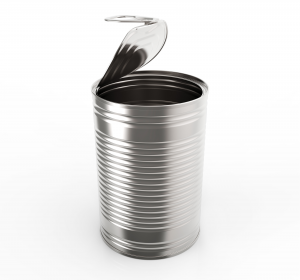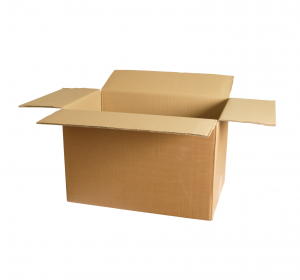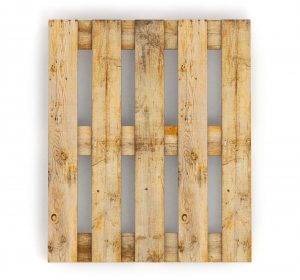Know your raw materials
It is important to know which type of raw materials you use. There are two types of raw materials: finite and renewable.
Finite or scarce raw materials can be depleted in the short or long run. We distinguish between two categories:
1. Raw materials that are already scarce. Metals such as copper and some minerals are examples of this category;
2. Raw materials that are expected to be finite, although it is not yet clear when they will be depleted. Oil, an important material for the production of plastic packaging materials, is one example. Another example is glass, which is made of sand, soda, and lime. These are all materials that are still abundantly available.
Renewable raw materials are created through natural processes or cultivation:
- Most renewable raw materials come from the agricultural sector. The best example is timber, which is used for the production of wooden, paper, and cardboard packaging materials. - -
- However, other materials also exist. Two examples are cork and leaves, which are compressed to make trays.
In some cases, such as for hardwood, renewable materials are taken directly out of the natural environment. It is important to delve these raw materials in a responsible manner, to avoid for example cutting down rainforests for timber extraction. Various certifications (for example FSC and PEFC) exist to oversee this process and safeguard the sustainable extraction of raw materials.
- Renewable raw materials may also come from the waste stream of a production process. One example is the starch that is created during the production of potato products such as fries.
- Bio-based plastic is a special kind of renewable raw material. Renewable materials, for example corn or sugar beets, are used for the production of bio-based plastics. The difference with for example timber lies in the fact that the raw materials used to make bio-based plastics are chemically processed to give them the properties of regular plastic.
Use recycled raw materials
To use raw materials in a sustainable manner, it is important to use recycled materials whenever possible, rather than using new (virgin) resources for each new packaging. Recycling ensures that (packaging) waste is turned back into raw materials, which can then be used for the production of new packaging materials or products. This process saves valuable resources. Additionally, making new materials out of recycled raw materials generally requires far less energy. It also reduces the amount of waste that needs to be processed or which might end up as litter. It is therefore important to keep raw materials inside the packaging chain as long as possible.
The image illustrates how raw materials are recycled and kept inside the packaging chain. Although the goal is to keep raw materials inside the chain as long as possible, the generation of waste streams is unavoidable. There are several reasons for that:
- Products may be lost because they are damaged during transport or due to spoilage because the packaging provides inadequate protection. In the light of sustainability, preventing product wastage is the key point of attention when developing a packaging.
- There is a residual stream of packaging materials that cannot be recycled, either because the materials cannot be separated properly or because they are not recyclable. The challenge is to keep these waste streams as small as possible through design for recycling.
- Some of the compostable raw materials are also eliminated from the chain. In general, this does not produce any waste. Instead, these compostable materials contribute to the creation of compost, which can be used as nutrients for the cultivation of new raw materials. During the design process, it is important to consider whether composting is the right end-of-life scenario. In many cases, reuse or recycling are ultimately better for the environment.
Avoid wastefulness
Because the demand for packaging materials continues to grow and because not all raw materials can be preserved in the chain, new raw materials will constantly have to be added to meet the demand. For good and sustainable packaging, it is important to properly protect the product, to use recycled materials whenever possible and – in cases where this is not possible – to use materials that are easy to separate and recycle. This results in less waste and reduces the need for virgin raw materials.
Simplicity makes recycling easier
To recycle packaging waste, it is essential that packaging materials are easy to separate (from each other). It is therefore preferable to use one type of material, for example paper, PET, PP, or glass, whenever possible. A steel cap on a glass bottle is okay, but a paper packaging covered in a layer of film is not. Monomaterials are easier to recycle than combined packaging materials and it is easier to recover the material. A packaging that consists of both virgin and recycled raw materials of the same type is also classified as a monomaterial. This applies not only to glass and metal, but also to plastics.
Most packaging materials consist of a combination of materials. On glass bottles paper labels are used and glass jars have metal lids. This is not necessarily a problem, as long as the packaging is designed in such a way that these materials can be separated.
In the example of the glass jar with the metal lid, the lid can easily be separated from the glass by breaking the glass. During the waste sorting process, a magnet is used to separate the metal lids from the glass. Many clever solutions and techniques have been developed to properly separate waste materials. Nevertheless, the most important contribution comes from the packaging’s design. A good example is the use of soluble glue for paper wrappers around plastic trays. The glue is dissolved in a rinsing bath, which makes it possible to separate the plastic from the paper and recycle each waste stream separately.
Recycling is more difficult for inseparable combinations of materials. One example is the plastic layer on the cardboard packaging of frozen products, which is added to make the packaging waterproof. These two materials each require a completely different recycling process and they cannot be processed together. Small additions of one material to another, such as a tiny plastic window in a cardboard box, do not cause any significant problems. However, large quantities disrupt the recycling process in such a way that no usable material can be produced.
Beverage cartons are the exception to this rule. Because the quantity of beverage cartons in the packaging waste stream is so large, a special recycling process has been developed to separate the paper, the plastics, and the metal layer. Many municipalities therefore collect beverage cartons as part of the plastic and/or metal waste stream. The beverage cartons are sorted and recycled, and particularly the fibres are often reused.
Use only what you really need
The sustainability of a packaging is not only determined by the type of material used, but also by the quantity. You can reduce the environmental impact of a product-packaging combination by not using more material than necessary to provide the required protection and functionality. Furthermore, you can also preserve materials by taking a critical look at the product’s shelf life or degree of protection:
- Should food have a shelf life of many years, or will it be consumed within three months?
- Can vulnerable parts of the product, for example the legs of a piece of furniture, be left off during transport and assembled after delivery?
It is important to carefully evaluate if it is possible to save materials by slightly compromising the product’s degree of protection, if the situation allows. There is a critical limit, however. As described in the section “The packaging and the product,” loss of product has a more significant environmental impact than using extra packaging materials. It is therefore important to prevent product damage or spoilage. If there is a risk of product loss, it is ultimately better for the environment to protect the product too much, rather than not enough.
